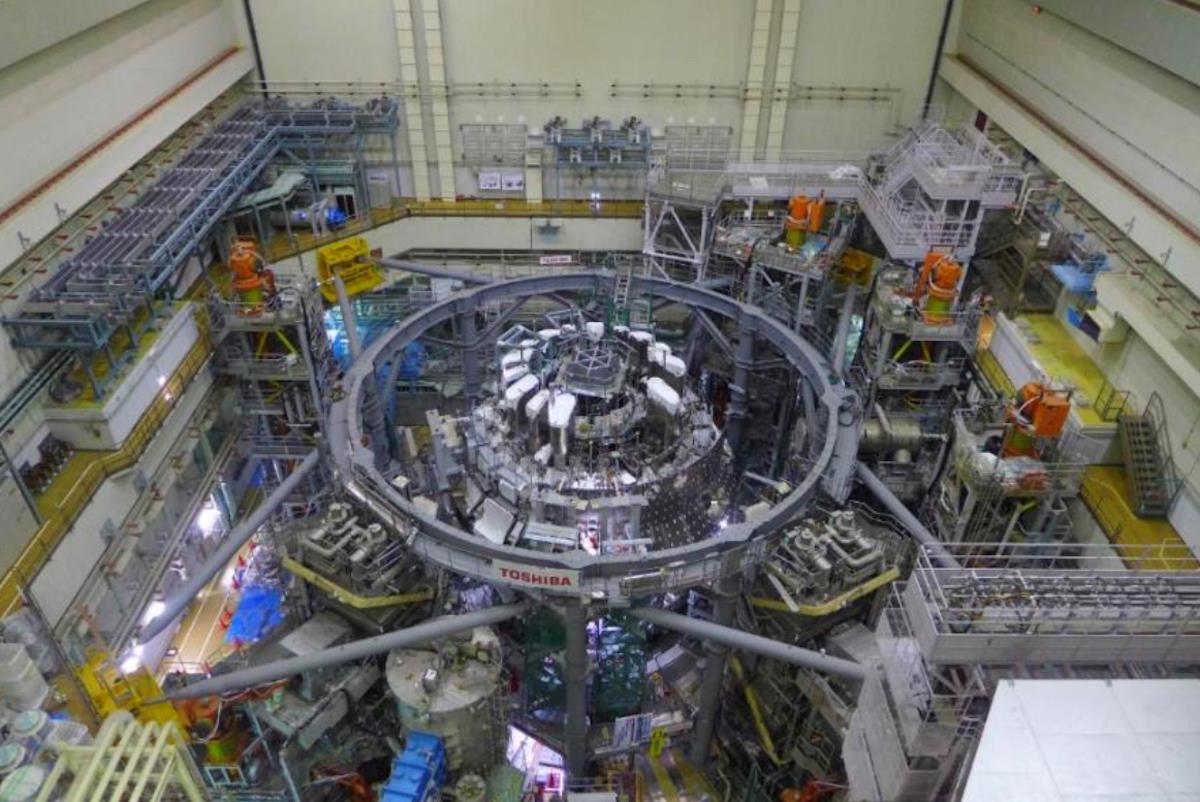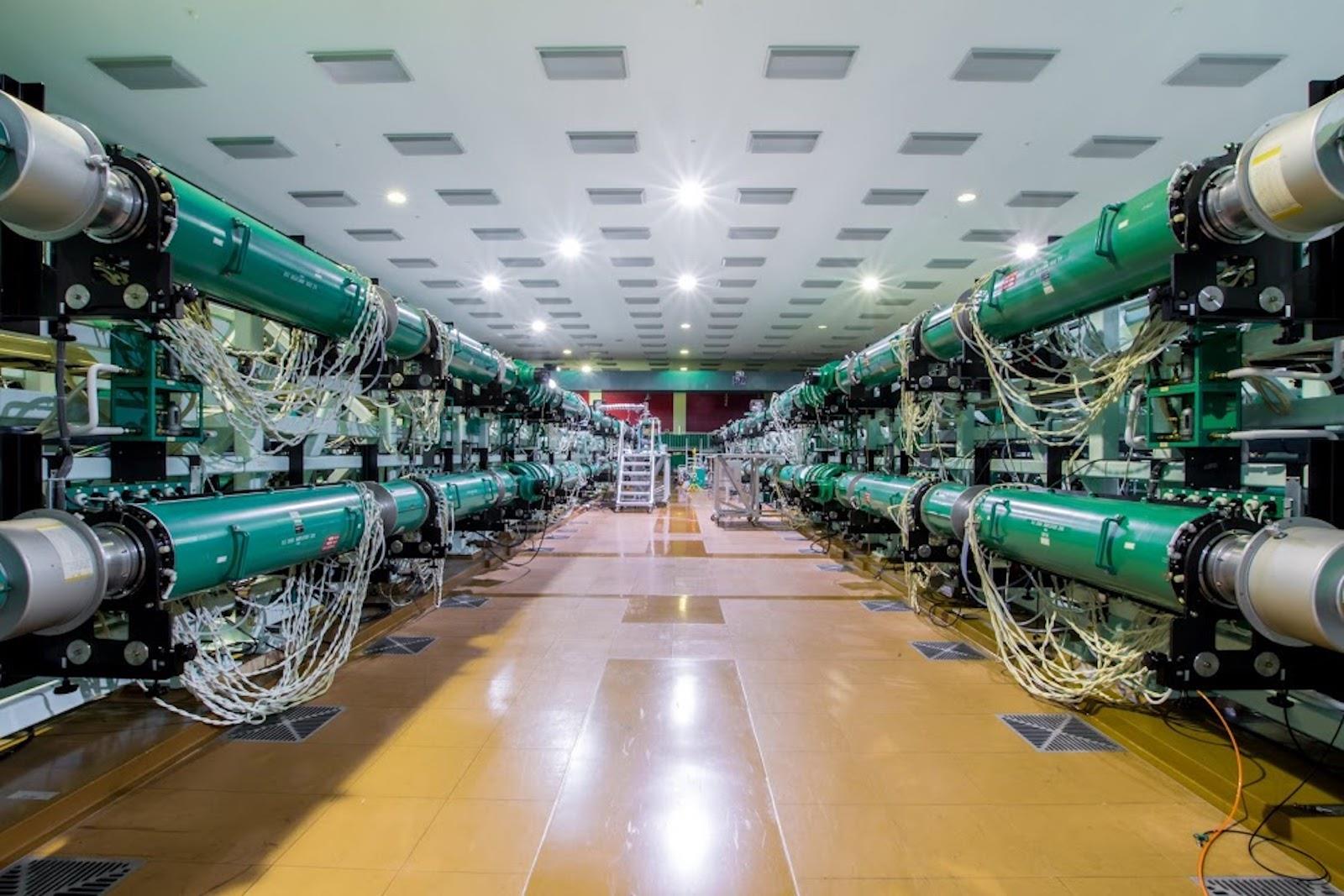(MENAFN- Asia Times) The Japanese government has opted to build up a huge domestic fusion industry to secure a leading role in the future commercial utilization of fusion power.
This policy is clearly set forth in a document published on April 14 by the Japanese Cabinet, entitled“.” The new policy goes far beyond merely stepping up the participation of Japanese industry and scientific institutes in international projects.
The explicit intention is to create the industrial and manpower base for Japan to build – and no doubt export – its own commercial fusion plants, if possible in advance of other industrial nations.
One cannot help but recall the way the Ministry of International Trade and Industry (MITI) famously built up Japan's industry, systematically, sector by sector, starting in 1949. The new“Fusion Innovation Strategy” is solidly rooted in Japan's industrial policy tradition.
At first glance, the new policy still seems oriented to the“ultra-conservative” scenario, according to which the International Thermonuclear Experimental Reactor (ITER), a giant tokamak reactor now under construction, will provide the essential scientific and engineering basis, by around 2035, for designing and constructing a first prototype fusion power plant, the DEMO, likewise as an international project.
The first commercial fusion power plants might then be built starting around 2050. As I stressed in an earlier Asia Times article , this scenario is intolerably long.
Significantly, Japan's“Fusion Innovation Strategy”
departs from it in several decisive ways. First, Japan intends to build its own prototype fusion power plant at least five years ahead of the standard scenario.
Second, this“JA-DEMO” will be a national project, based as much as possible on Japanese technology and Japanese industry. Third, the cited document hints at the possibility that scientific and technological breakthroughs might accelerate the process even more.
The document notes that the US and UK are already restricting access to some of the technologies they intend to use in future fusion power plants. It stresses the urgency of beginning immediately, to build up the fusion industrial sector. Otherwise, Japan might come in too late.
Japan's takeoff point Japan already occupies one of the leading positions internationally in fusion research and fusion engineering. This provides a favorable takeoff point for the government's new strategy.

The JT-60SA tokamak. Image: Facebook
The presently largest tokamak fusion reactor in the world, the JT-60SA, is located at Japan Atomic Energy Agency's Naka Fusion Institute. A cooperative project with the EU, JT-60SA is the follow-on to Japan's flagship tokamak reactor, the JT-60U, which holds the world record for the hottest ion temperature ever achieved (522 million °C) as well as the highest value among magnetic confinement devices of the
so-called“fusion triple product.”
The fusion triple product is defined as the product of the temperature, the density and the duration of confinement of the plasma.
Together with the plasma temperature, the triple product is regarded as a measure of progress toward a net power-producing fusion reactor. Since the late 1960s, the value of the triple product achieved by tokamak reactors doubled on average every 1.8 years.
Interestingly, this doubling rate exceeds that of the famous“Moore's Law”, which states the number of transistors on a chip double approximately every two years.

A simplified plot of the progress of various tokamak reactor experiments toward the“breakeven” point Q = 1. (1 keV corresponds to a temperature of roughly 11 million degrees Celsius.) Note the logarithmic scales. The red area is the projected range of the ITER reactor. Image: Wikipedia
Had JT-60U been operating with deuterium-tritium fuel – the most likely fuel for first-generation fusion reactors – it would have achieved so-called breakeven, in which the energy liberated by fusion reactions exceeds that energy input used to heat the plasma.
However, as in most tokamak experiments, the JT-60U was not designed to produce large numbers of fusion reactions. Instead, it operated with pure deuterium, avoiding the need for special handling of tritium, which is moderately radioactive, as well as the strong neutron radiation that would have been generated by DT reactions.
I should stress, with reference to my earlier Asia Times articles on China's EAST tokamak, that the recent breakthroughs on EAST concern the increase in the confinement time – the time during which the high-temperate plasma is maintained in a stable state in the reactor.
While the fusion triple product realized by EAST in the relevant experiments is much lower than that of JT-60U, the latter's plasma lasted only seconds while EAST maintained stable confinement at comparable temperatures for 17 minutes.
In addition to magnetic confinement fusion, Japan has one of the world's advanced laser fusion facilities, the Gekko-XII, based in Osaka. Curiously,
while referring vaguely to“various reactor types”, the strategy does not explicitly mention laser (or“inertial confinement”) fusion.

The Gekko XII laser room. Image: Institute of Laser Engineering, Osaka University
I shall not speculate about why but merely report an interesting piece of news: In 2021 Japan had its first laser nuclear fusion startup, EX-Fusion Inc, with the ultimate goal of building a commercial laser fusion reactor.
EX-Fusion was co-founded by Shinsuke Fujioka from Osaka University's Institute of Laser Engineering, which built and operates the Gekko XII system.
EX-Fusion has already raised seed money from venture-capital firms in Osaka and Tokyo to begin work on two of the most essential systems in a laser fusion power plant: a system for continuously feeding fusion fuel particles in rapid succession into the combustion chamber; and a laser target beam tracking system which ensures that the laser pulse hits the moving target particle at exactly the right moment.
Some key quotes To round out the picture, it is worth quoting some passages from the Japanese Cabinet's“Fusion Energy Innovation Strategy.”, which is available in provisional translation here .
For the present purposes, I have rearranged some of the passages. The stress marks are mine.
The strategy paper highlights international developments which have fed into the government's decision to launch a large-scale fusion industry in Japan:
“Government-led scientific and technological breakthroughs are being made, and private-sector investment in this area is also increasing in many countries. Spurred by this booming private-sector investment, fusion start-ups in the US, the UK, and elsewhere are accelerating fusion R&D competition with setting ambitious targets for fusion power generation ahead of the schedules of government plans up to now. Moreover, China is also making strong progress in its plans for the government-led construction of experimental equipment and a prototype reactor, which could make China a very strong competitor in fusion research and development...
“Other countries and private companies are developing advanced technologies and various reactor types, and these original and emerging technologies could have a game-changing impact ...
“The US and the UK governments formulated their national strategies (US: March 2022; UK: October 2021) targeting the commercialization of fusion energy, and have started confining relevant technologies to their own countries . The race to commercialization has already begun without waiting for the actual realization of fusion power generation ...”
What does this mean for Japan? The paper notes:
“ Fusion technologies, which produce ripple effects to other industries, are important for ensuring economic security based on technological security ....
“Those areas that could hinder the realization of fusion energy in Japan if dominated by other countries should be approached from the perspective of supply chain access regardless of whether Japan has strengths or weaknesses in them...
“Japan regards fusion energy as a new industry and needs to adopt a multifaceted approach, including entering without delay the global supply chains that are being created ...
“The government labeled its fusion strategy for the coming ten years as: 'Towards the practical realization of fusion energy, the world's next-generation energy source - The commercialization of fusion energy: Seizing the winning market edge by leveraging Japan's technological advantage .'...
“It will be essential to build the foundation for the [Japanese] DEMO with the aim of establishing a future fusion energy ecosystem and promoting the acquisition of necessary technology in anticipation of the participation of private companies in the development of Japan's DEMO ....
“The Cabinet Office and MEXT will support the R&D by private companies that will play a major role in developing the fusion industry. In particular, support to start-ups will be enhanced staring fiscal 2023.”
(MEXT stands for the Japanese government's mammoth Ministry of Education, Culture, Sports, Science and Technology.)
A particularly important passage raises the possibility of greatly accelerating the process toward commercial fusion power:
“MEXT's“Roadmap toward Fusion DEMO Reactor (first report)” sets the period for the achieving of power generation around 2050, and the results of study by MEXT's Task Force on a Comprehensive Strategy for DEMO Development has shown that it is possible technically to move that timeline forward ...”
The study referred to here is an October 28, 2022 report entitled“Action Plan for development of DEMO based on study for moving forward the timeline for fusion energy power generation.”
Finally, the Japanese government's strategy sees fusion as necessary for achieving a new stage of social development, referred to as“society 5.0 .”
“The government will ... promote activities for deepening citizens' understanding of fusion energy ... Fusion energy will not only solve the energy problems of Japan...
[but also] become the foundation for supporting Society 5.0 , which is hailed as the model for the future society Japan should aim for.”
Comment The Japanese government has clearly chosen to make fusion energy a pillar of its national industrial policy, starting immediately. I consider this a wise decision, and one with far-reaching positive consequences.
It stands in sharp contrast to Germany, which has no national fusion program and where one can witness the pathetic spectacle of a former leader in nuclear technology shutting down its last fission plants, at the same time Japan is turning its own plants back on.
Decisive for the success of the Japanese government's fusion strategy, however, will be to fully exploit the potential for innovation inherent in fusion and fusion-related technology.

Two 440-ton vacuum vessel sectors for the ITER nuclear fusion project in southern France. Japan will use a giant device for nuclear fusion experiments in Ibaraki Prefecture to provide data necessary for the multinational endeavor. Image: ITER Organization
Over the 70 years since the first awesome demonstration of fusion energy – the explosion of the first hydrogen bomb – the struggle to realize fusion energy in controlled forms has generated an enormous store of creative ideas and experimental discoveries.
These are embodied only partially, or not at all, in the present, slow-moving ITER project. There is every reason to expect, that the economic applications of fusion energy will take a great variety of forms, including reactor types based on different principles.
The unprecedented flow of private investment into fusion now underway is essential for realizing this broader perspective, as well as shortening the timeline to commercialization.
Like this:Like Loading...